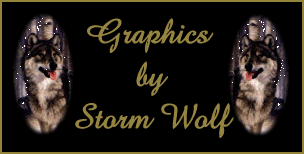
The German Shepherd Dog
Since the dawn of history, man and dog have had a complementary relationship.When man was a hunter, the acute hearing, swiftness of movement and excellent scenting ability of the dog created an ideal partner in seeking out and killing prey.
In return for this work the dog received shelter and food.
The defensive as well as the offensive traits in the character of the dog assumed greater importance as man progressed and emerged from his role as a hunter to a more settled existence.
Man's acquisition of land and stock marked the dawn of the pastoral age in which the dog was to play the part of protector.
Now began the process of specialized breeding, firstly into two main groups of hunting and herding dogs. The many types of herding dogs performed the function of controlling and guarding the flocks as an aid to, and sometimes as a substitute for the shepherd.
The regional shepherd dogs of Germany had existed for centuries; their type and conformation varied according to the terrain and the movement patterns of the flocks themselves. In the hilly regions of the south, a hardy strain of working dogs developed - large boned with powerful hindquarters and with firm and correct forehand angulation - entirely necessary for movement up and down steep slopes to control the flocks. On the plains of northern Germany, on the other hand, the need was for an athletic, long-striding type of dog, capable of prolonged, tireless trotting over large expanses of terrain, which featured few natural or man-made boundaries. It was on these plains that the concept of the shepherd dog as 'living fence' was first developed; at once to contain the often large flocks, as well as to ward off intruders of whatever kind.

Thuringian shepherds in Germany in the nineteenth century, interest in the native shepherd breeds grew steadily. The breeders of Württemberg, themselves mostly shepherds and farmers, looked to the north and in particular to the dogs of Thuringia, to improve ear carriage and coat colour, for it was these characteristics that their own dogs lacked. Especially prized was the wolf-grey colour of the Thuringian shepherd dog, whose outgoing temperament and joy of life was found desirable for introduction into the more sober southern strains. Coats of different textures and lengths were not necessarily confined, however, to particular areas, and so, in spite of later attempts to stabilise coat types, variations still come through including the long-coated German Shepherd dog of today, so much admired by many lovers of the breed.

These activities came to the notice of the 'fanciers' and on the 16th December 1891, the Phylax Society was formed. Support for this quickly dwindled, and in its stead what was to become the largest one-breed society in the world was founded on 22nd April 1899: Der Verein für Deutsche Schäferhunde (SV), whose president was Cavalry Captain Max von Stephanitz. This great and far sighted man realised that with the arrival of the industrial society, rural life would eventually decline, and that new uses would have to be found for the shepherd dog. He knew that if the breed was to endure he must fix type and thus create a 'national' shepherd dog, a blend of the best characteristics from the regions of north and south. The process had already begun. he was to complete it. Von Stephanitz also realised the weakness of man's nature and the short-comings of human endeavour. he had to devise a system which would not only fix, but maintain type in the generations to come. He had to ensure, if he were to succeed, that future breeders did not deviate from the path he would set.




